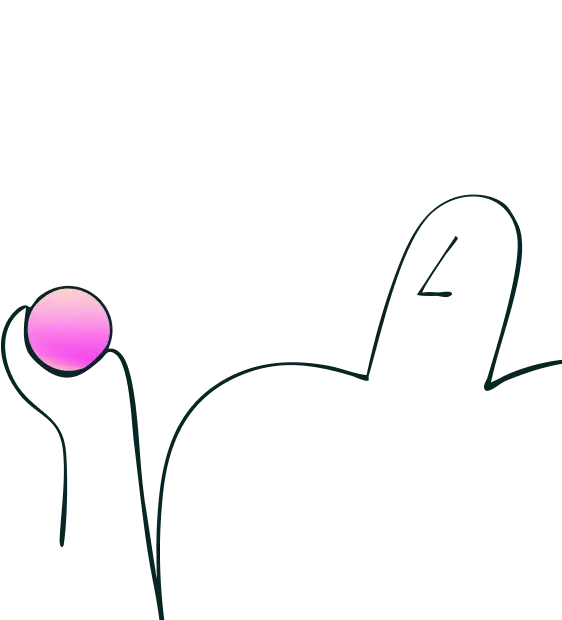04 Jun 2025
|15 min
Usability testing questions
We share our top tips on writing effective usability testing questions, including specific and open-ended questions, avoiding leading or biased questions, and focusing on the user's goals and tasks.

Marketing practitioners sometimes assume their target audience thinks the same way they do about a product or concept – but the reality is that people often respond differently, even within the same target group.
It’s the same with user experience. So to create a great UX experience, you need to understand who your users are, as well as what they want or need from a product, and why. But how?
The short answer: by asking users lots of questions!
In this guide, we’re going to cover the following areas:
Why you need to usability testing script?
Usability testing question categories (with example questions).
Best practices for asking test questions.
Let’s dive right in!
Why do you need to ask usability testing questions?
Asking users questions about your product or UX design is a crucial step of product development. It helps you test your assumptions, spot design issues early, and see how users interact with similar products. Without this, you risk building something that doesn’t meet user needs.
Asking questions during usability testing helps to give you a direct insight into what's working and what needs improving. The responses help you refine your product, making it more intuitive and user-friendly.
While we're going to cover best practices further down, one rule of thumb is that you should ask questions at each stage of the design process – this way, you get more in-depth results and maximize the benefits.
Start asking better questions today
Ready to gather valuable user feedback? Try Lyssna's free usability testing platform and start asking the right questions to improve your UX design today.
Types of usability testing questions
As mentioned above, you should organize your usability testing questions based on your current research stage. But to make sure you’re asking users the right questions, you need to define the purpose of your research – what do you want to find out?
By defining your overall research goal, you’ll have a much easier time narrowing down the list of questions to ask at each stage.
With that in mind, there are three core usability testing stages where you can ask users questions: before the test (to screen participants), during the test (to help answer your research questions), and after the test (to gain feedback).
Screener questions: Using a screener can help you recruit participants based on their demographics, background, and experience.
In-test questions: Ask questions during the test to understand user interactions and gather feedback without influencing their actions.
Follow-up questions: Collect responses after the test to gather additional feedback so you can improve both the product and the testing process.
Another aspect to consider is whether you’ll be using remote usability testing tools as opposed to an testing in person, and whether the test will be moderated or unmoderated. You can find more details about the nuances between these testing methods in our usability testing guide.
For now, let’s take a look at these categories in more detail.
Screener questions
If you're recruiting respones from a user research panel, there are often demographic and psychographic filters built in to help you find participants matching your target audience. But if you're recruiting from your own network, or your research requires participants with specific knowledge or experience, you might need to dig deeper.
You can do this by asking a few targeted screener questions. These questions are usually about demographics, background, and experience.
Example screener questions:
What is your age group? (e.g. 18–25, 26–34)
What is your occupation or industry?
Have you used similar products before?
How often do you use [product category] in your daily life?
What device do you primarily use for [specific task]?
Demographic questions
Asking demographic questions can help you find trends or narrow down your participant pool by age, gender, nationality, relationship status, and religion (if relevant). However, in many countries, these points of data are protected characteristics and can be sensitive information for some people.
Therefore, it’s best to ask these questions in ranges or let the users define themselves (and/or give “prefer not to answer” or “other” options). Here are some examples:
What age group are you in? (Give ranges as options, e.g. 18–25, 26–34, etc.)
How would you describe your gender?
How would you describe your ethnicity?
What is your household income? (Again, giving ranges as an option)
How would you describe your relationship status?
To help you further filter your participants, you can ask additional, more specific background questions as part of your user testing plan.
Background questions
Asking background questions can help you get a better understanding of the person and how your product or service fits into their life.
You can also find out if they’re an existing user, a user of competing products, or if they’re completely new – each offers different perspectives that you can take into account during your results analysis.
Some background questions to ask include:
What does a day in your life look like?
Do you already use X product, and if so, how often?
What type of product do you use to do X?
Which device would you normally use to do X?
How much time do you typically spend online? (If building a digital product)
How experienced are you in using X type of product?
Using these screening questions can help you find the right participants, as well as help explain any abnormalities in your results.
In-test questions
Now to the questions you probably had in mind when you were thinking about this topic – what to ask during your usability test. Contrary to what you might think, this is when you should avoid asking too many questions, as this can distract your participants and stop them from taking actions natural to them.
However, the most important rule to remember when asking usability test questions is to not ask leading questions, meaning a question that influences the user to think a certain way, e.g. “how good was the experience of using X feature?”.
Leading questions like this will skew your results and won't provide an accurate picture of their experience. Instead, ask neutral, broad questions that encourage users to offer honest answers.
Examples of non-leading questions can include:
What do you think about X design?
Can you name any competitors that you currently use, or would use, X for?
What features do you find most valuable, and why?
How would you describe the language used on this page?
Can you give an example of where you would use X?
I noticed you [describe something they did]. Why?
How was your experience completing X task?
Open-ended questions like these help you get an in-depth understanding of the user’s experience, which is far more useful than simple ‘yes’ or ‘no’ based questions.
Follow-up questions
After participants finish a test, they might still have some opinions about the product or testing experience. The end of the test is a great opportunity to ask some final questions while you still have their attention.
These questions can help you improve the testing experience or gather opinions on aspects of the product you hadn’t considered before. Here are some example questions:
How would you describe the overall experience of the product?
How would you describe the overall experience of this test?
Were any of the tasks difficult to complete? (Or) How would you rate the difficulty of the tasks on a scale of 1–10 (10 being extremely difficult)?
What do you expect X product/feature to be like in the future?
If you could make any changes to X, what would they be and why?
Do you have any additional comments or questions?
Another option is to use standardized surveys—such as the System Usability Scale—to track long-term trends or benchmark against similar products. These methods fall under broader types of quantitative research, which relate closely to understanding what is user experience design and how to improve it through structured, data-driven insights.
Comparing in-person moderated and remote unmoderated usability testing
Choosing the right usability testing questions also depends on your research objectives, timeline, and resources. Both in-person moderated and remote unmoderated usability testing offer unique advantages. Here's a high-level breakdown to help you choose the right approach.
Feature | In-person moderated testing | Remote unmoderated testing |
|---|---|---|
Interaction | Direct, real-time facilitator interaction with participants | Participants complete tasks independently without real-time facilitation |
Environment | Controlled setting, often in a lab or designated space | Natural user environment, allowing participants to use their own devices in familiar settings |
Cost | Higher costs due to venue rental, travel, and facilitator expenses | Generally more cost-effective, eliminating the need for physical setups and associated expenses |
Flexibility | Limited by geographical location and participant scheduling | Highly flexible, enabling participation from a diverse, global audience at their convenience |
Data collection | Immediate observation and feedback | Automated data collection with tools like screen recordings, heatmaps, and click analytics |
Best suited for | Gaining deep insights into user behaviors, especially for complex tasks requiring observation | Gathering broad feedback on usability and design elements efficiently and at scale |
Lyssna supports both remote moderated and unmoderated testing, offering flexibility to choose the approach that best aligns with your research needs.
Best practices for asking usability testing questions
When conducting remote unmoderated usability testing, it's essential to craft thoughtful questions and instructions to gather meaningful feedback without direct facilitator interaction. Here are some best practices to follow.
Write clear task instructions
In unmoderated tests, participants rely solely on the instructions you provide. Make your tasks specific and actionable, such as: “Find a pair of running shoes under $100 and add them to your cart.” Ambiguous tasks can confuse users, leading to incomplete data.
Our video goes into more detail on writing effective usability testing tasks and scenarios.
Use open-ended questions
Open-ended questions encourage detailed responses that reveal user thought processes. Instead of asking, “Did you like the checkout process?” ask, “What stood out to you about the checkout process?” This allows users to express what worked well and what didn’t.
Maintain neutrality
Avoid leading questions that might influence participants. For example, ask, “How was your experience using this feature?” rather than, “Did you find this feature helpful?” Neutral phrasing ensures unbiased feedback.
Ask about specific behavior
Focus on actions users took during the test. Questions like, “What made you choose that payment method?” help you understand decision-making processes and identify friction points.
Time questions appropriately
In unmoderated tests, timing is crucial. Ask quick, straightforward questions during tasks, but save detailed ones for the end. For example, after task completion, ask, “Was there anything that frustrated you while completing this task?” This makes sure participants stay focused during the test.
Ask "why" questions
To dig deeper into user decisions, ask follow-up questions such as, “Why did you click on that option first?” or “Why was that feature important to you?” This reveals user motivations and preferences.
Keep questions context-specific
Tie your questions to specific interactions. For instance, after a participant navigates a sign-up form, ask, “What did you think about the sign-up process?” Context-specific questions provide clear, actionable feedback about each part of the user journey.
Encourage thinking aloud
In unmoderated tests, asking participants to verbalize their thoughts while completing tasks using the think-aloud protocol gives you insights into their expectations and pain points. Prompt them with, “Please describe what you're thinking as you complete this task.” This helps capture their immediate reactions.
Asking the right questions in the right way helps you uncover what users truly need, leading to better design decisions and more user-friendly products.
How to respond when research participants ask you a question
When participants ask questions during moderated usability testing, your response can impact the quality of your results. Here’s how to handle it effectively:
Stay neutral: Avoid influencing the participant’s behavior. If you're asked, “Am I doing this right?”, respond with something like, “There’s no right or wrong way – I’m here to learn from how you interact with the product.”
Encourage independent thinking: Gently prompt participants to figure things out on their own. For example:“What would you do next if I wasn’t here?”
Clarify only when necessary: If unclear instructions cause confusion, clarify what you're asking the participant to do without giving hints about the product.
Acknowledge questions without leading: If you're asked for opinions on features, acknowledge the question but redirect focus:“That’s a great question. I’m curious – what do you think about that feature?”
Take note of confusion: Document when participants ask questions. This often signals areas where the product or task instructions might need improving.
Handling participant questions thoughtfully helps maintain the integrity of your research while also offering valuable information about user experiences.
Key factors for creating effective usability tests
Designing usability tests that yield useful insights requires careful planning. Here are some key factors to consider.
Clarity and specificity of questions
Questions should be clear, concise, and easy to understand. Ambiguous or overly complex questions can confuse participants, leading to inaccurate results. Use straightforward language to make sure participants know exactly what you're asking them to do.
Realistic user scenarios and tasks
Design tasks that reflect real user experiences. For example, if you’re testing a mobile banking app prototype, ask participants to make a transfer or check their account balance. Realistic tasks help you observe natural behaviors.
Participant relevance and targeting
Your participants should closely match your actual user base. Thoughtful screener questions help you recruit users whose demographics, behaviors, and needs align with your product. This ensures feedback is relevant and actionable.
Test your environment and setup
A well-prepared environment is crucial for accurate results. For remote tests, provide clear setup instructions to help participants minimize distractions. If you're testing in person, make sure your tools work smoothly on different devices to avoid technical issues that could disrupt the session.
Improve your designs by asking the right questions
Regular usability testing can help you create better user experiences, but it can take a lot of time and effort. Asking specific questions can help you maximize your return on investment (in time, feedback you gather, and the costs of testing).
Through testing, you can identify problems before launch and find out if your product addresses what your users want and need. Sometimes, the results can also help inspire new ideas based on the feedback you gather, which you can better understand through effective ux research synthesis.
Simplify your usability testing
Turn insights into action with Lyssna's intuitive testing platform. Sign up for free and start creating more user-friendly products based on real feedback.
Frequently asked questions about usability testing questions
Alexander Boswell is the Founder/Director of SaaSOCIATE, a B2B SaaS, MarTech and eCommerce Content Marketing Service and a Business PhD candidate. When he’s not writing, he’s playing baseball and D&D.
You may also like these articles


Try for free today
Join over 320,000+ marketers, designers, researchers, and product leaders who use Lyssna to make data-driven decisions.
No credit card required






